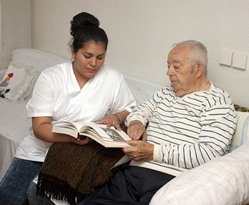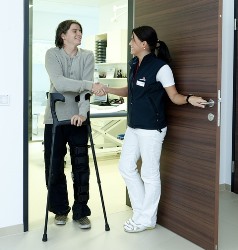How to Find an Accredited Nursing Course near Kadoka South Dakota
 Locating the best nursing school near Kadoka SD may feel like a challenging project, particularly if you aren’t sure what to search for in a good degree program. As you may presently understand, to practice as a registered nurse, you must acquire the necessary education and training in order to become licensed. So it is vitally important that you research and evaluate the qualifications of each program you are thinking about before enrolling in your final selection. Regrettably, too many future students base their determination solely on the cost of tuition and the nearness of the school. Choosing the least costly school or the one that is local to your home is probably not the most reliable way to decide on a nursing program. There are various essential additional things to explore before you make a decision where to attend classes. But before we explore that checklist, let’s first review the nursing degree choices that are offered as well as what the functions of nurses are in our healthcare system.
Locating the best nursing school near Kadoka SD may feel like a challenging project, particularly if you aren’t sure what to search for in a good degree program. As you may presently understand, to practice as a registered nurse, you must acquire the necessary education and training in order to become licensed. So it is vitally important that you research and evaluate the qualifications of each program you are thinking about before enrolling in your final selection. Regrettably, too many future students base their determination solely on the cost of tuition and the nearness of the school. Choosing the least costly school or the one that is local to your home is probably not the most reliable way to decide on a nursing program. There are various essential additional things to explore before you make a decision where to attend classes. But before we explore that checklist, let’s first review the nursing degree choices that are offered as well as what the functions of nurses are in our healthcare system.
Request Free Information on Nursing Schools Below
Nursing Degrees
There are several degree options to choose from to become a nurse. And to become a Registered Nurse (RN), a student must enroll in an accredited school and program. A nursing student can obtain a qualifying degree in as little as 2 years, or continue on to earn a graduate degree for a total of 6 years. Following are some short descriptions of the nursing degrees that are available to aspiring students in the Kadoka SD area.
- Associates Degree. The Associate Degree in Nursing (ADN) is commonly a two year program made available by community colleges. It prepares graduates for an entry level position in nursing in healthcare centers including hospitals, clinics or nursing homes. Many employ the ADN as an entry into nursing and later achieve a more advanced degree.
- Bachelor’s Degree. The Bachelor of Science in Nursing (BSN) supplies more in depth training than the ADN. It is commonly a four year program offered at colleges and universities. Licensed RNs may be allowed to complete an accelerated program based on their past training or degree and professional experience (RN to BSN). Those applying to the program might want to advance to a clinical or administrative position, or be more competitive in the job market.
- Master’s Degree. The Master of Science in Nursing (MSN) is typically a 2 year program after receiving the BSN. The MSN program provides specialization training, for instance to become a nurse practitioner or focus on administration, management or teaching.
After a graduating student has attained one of the above degrees, he or she must pass the National Council Licensure Examination for Registered Nurses (NCLEX-RN) in order to become licensed. Various other requirements for licensing vary from state to state, so be sure to get in touch with the South Dakota board of nursing for any state requirements.
Click Here to Get Free Information on Nursing Schools Near You!
Why Nursing?
 Nurses are an important component of a Kadoka SD medical team, and for a large number of patients, their primary care providers. A career in nursing opens doors to a number of opportunities, such as research, health care education and specialty areas of practice. Nurses enter the profession for various reasons, among the most significant are its practical and personal rewards. Nurses provide direct, one-on-one care to patients. Most individuals in a medical facility or home care environment have more contact with nurses than with doctors. Nurses commonly go into the profession out of a desire to administer to the needs of patients, including in instances of short-term treatment of illness and extended care of chronic conditions. This human aspect of the health profession, rather than the analytical or research related aspects, is attractive to many who decide to enter into a career in nursing. Nurses have extensive applicable skills and can select from a number of work settings, including nursing homes, physician’s offices, medical clinics, community centers and hospitals. Also, nurses can advance into a variety of specializations, including substance addictions, critical care, genetics and neonatology. Although many nurses provide direct patient care, others elect to be educators, policy consultants or pharmaceutical representatives.
Nurses are an important component of a Kadoka SD medical team, and for a large number of patients, their primary care providers. A career in nursing opens doors to a number of opportunities, such as research, health care education and specialty areas of practice. Nurses enter the profession for various reasons, among the most significant are its practical and personal rewards. Nurses provide direct, one-on-one care to patients. Most individuals in a medical facility or home care environment have more contact with nurses than with doctors. Nurses commonly go into the profession out of a desire to administer to the needs of patients, including in instances of short-term treatment of illness and extended care of chronic conditions. This human aspect of the health profession, rather than the analytical or research related aspects, is attractive to many who decide to enter into a career in nursing. Nurses have extensive applicable skills and can select from a number of work settings, including nursing homes, physician’s offices, medical clinics, community centers and hospitals. Also, nurses can advance into a variety of specializations, including substance addictions, critical care, genetics and neonatology. Although many nurses provide direct patient care, others elect to be educators, policy consultants or pharmaceutical representatives.
Registered Nurse Job Activities
 Registered nurses are the primary occupation in the healthcare delivery system. RNs practice in many different medical settings, including Kadoka SD hospitals, family practices, outpatient clinics, nursing homes and even schools. Their general function is to assist doctors in the treatment of their patients. Having said that, the specific duties of a registered nurse will depend on their job or specialization in addition to where they work. A portion of the functions of an RN may include:
Registered nurses are the primary occupation in the healthcare delivery system. RNs practice in many different medical settings, including Kadoka SD hospitals, family practices, outpatient clinics, nursing homes and even schools. Their general function is to assist doctors in the treatment of their patients. Having said that, the specific duties of a registered nurse will depend on their job or specialization in addition to where they work. A portion of the functions of an RN may include:
- Providing medications
- Monitoring patients
- Performing physical examinations
- Managing care
- Overseeing LPNs, LVNs and nurse aides
- Informing patients and their families
- Managing health records and charts
Nurses with a higher degree may have more complex job duties and responsibilities. Nurse practitioners (NP), for example, must hold a Master’s Degree and typically work more independently than their RN counterparts. They can provide primary or specialty care services, prescribe medications, and diagnose and treat routine illnesses or injuries.
Nursing Online Schools
 Enrolling in nursing schools online is growing into a more in demand way to obtain training and acquire a nursing degree. Certain schools will require attending on campus for a component of the training, and almost all programs require a specific amount of clinical rotation hours carried out in a local healthcare center. But since the rest of the training can be accessed online, this method may be a more practical answer to finding the free time to attend school for some Kadoka SD students. Regarding tuition, a number of online degree programs are cheaper than other on campus choices. Even supplementary expenses such as for commuting and study materials can be minimized, helping to make education more easily affordable. And many online programs are accredited by organizations like the Commission on Collegiate Nursing Education (CCNE) for BSN and MSN degrees. So if your job and household obligations have left you with limited time to pursue your academic goals, maybe an online nursing training program will make it more convenient to fit a degree into your active schedule.
Enrolling in nursing schools online is growing into a more in demand way to obtain training and acquire a nursing degree. Certain schools will require attending on campus for a component of the training, and almost all programs require a specific amount of clinical rotation hours carried out in a local healthcare center. But since the rest of the training can be accessed online, this method may be a more practical answer to finding the free time to attend school for some Kadoka SD students. Regarding tuition, a number of online degree programs are cheaper than other on campus choices. Even supplementary expenses such as for commuting and study materials can be minimized, helping to make education more easily affordable. And many online programs are accredited by organizations like the Commission on Collegiate Nursing Education (CCNE) for BSN and MSN degrees. So if your job and household obligations have left you with limited time to pursue your academic goals, maybe an online nursing training program will make it more convenient to fit a degree into your active schedule.
Questions to Ask Nursing Degree Programs
 Once you have decided on which nursing degree to pursue, along with if to attend your classes on campus near Kadoka SD or online, you can use the following checklist to begin narrowing down your options. As you probably are aware, there are numerous nursing schools and colleges throughout South Dakota and the United States. So it is essential to decrease the number of schools to choose from to ensure that you will have a manageable list. As we previously pointed out, the site of the school and the expense of tuition are undoubtedly going to be the first two points that you will look at. But as we also stressed, they should not be your only qualifiers. So before making your final choice, use the following questions to see how your selection compares to the other programs.
Once you have decided on which nursing degree to pursue, along with if to attend your classes on campus near Kadoka SD or online, you can use the following checklist to begin narrowing down your options. As you probably are aware, there are numerous nursing schools and colleges throughout South Dakota and the United States. So it is essential to decrease the number of schools to choose from to ensure that you will have a manageable list. As we previously pointed out, the site of the school and the expense of tuition are undoubtedly going to be the first two points that you will look at. But as we also stressed, they should not be your only qualifiers. So before making your final choice, use the following questions to see how your selection compares to the other programs.
- Accreditation. It’s a good idea to make sure that the degree or certificate program in addition to the school is accredited by a U.S. Department of Education acknowledged accrediting organization. Besides helping ensure that you get a quality education, it may assist in acquiring financial aid or student loans, which are often not offered in Kadoka SD for non-accredited schools.
- Licensing Preparation. Licensing requirements for registered nurses differ from state to state. In all states, a passing score is needed on the National Council Licensure Examination (NCLEX-RN) as well as graduation from an accredited school. Some states require a specific number of clinical hours be performed, as well as the passing of additional tests. It’s imperative that the school you are attending not only delivers a top-notch education, but also preps you to meet the minimum licensing requirements for South Dakota or the state where you will be practicing.
- Reputation. Look at online rating companies to see what the evaluations are for all of the schools you are looking into. Ask the accrediting organizations for their reviews too. In addition, check with the South Dakota school licensing authority to find out if there are any complaints or compliance issues. Finally, you can call some Kadoka SD healthcare organizations you’re interested in working for after graduation and ask what their opinions are of the schools as well.
- Graduation and Job Placement Rates. Find out from the RN colleges you are looking at what their graduation rates are as well as how long on average it takes students to finish their programs. A low graduation rate may be an indication that students were unhappy with the program and dropped out. It’s also essential that the schools have high job placement rates. A high rate will not only verify that the school has a good reputation within the Kadoka SD medical community, but that it also has the network of relationships to help students obtain employment.
- Internship Programs. The most ideal way to acquire experience as a registered nurse is to work in a clinical setting. Almost all nursing degree programs require a certain number of clinical hours be completed. Various states have minimum clinical hour mandates for licensing too. Find out if the schools have a working relationship with Kadoka SD hospitals, clinics or labs and help with the placement of students in internships.
Nursing Classes Online Kadoka SD
How to Enroll in RN Programs Online Kadoka South Dakota
Picking the ideal nursing program is probably the most critical phase to beginning a new career in the health care industry. There are many variables that you need to think about when picking a nursing school. These aspects will be prioritized differently contingent on your current career objectives, lifestyle, and economic status. As we have pointed out in this article, it is essential that you choose a nursing college and a degree program that are each accredited and have outstanding reputations within the health care community. You originally came to this website due to your interest in How to Enroll in RN Programs Online and wanting more information on the topic Fast Track RN Training Online.. However, by utilizing our list of qualifying questions, you will be able to develop a short list of schools to choose from so that you can make your ultimate selection. And with the proper degree and training, combined with your dedication and drive to succeed, you can become a practicing nurse in Kadoka SD.
More South Dakota Nursing Locations
Kadoka, South Dakota
Kadoka had its start in 1906 when the Chicago, Milwaukee, St. Paul and Pacific Railroad was extended to that point.[7] The town was designated county seat of the newly formed Jackson County in 1915.[8]
As of the census[3] of 2010, there were 654 people, 291 households, and 160 families residing in the city. The population density was 285.6 inhabitants per square mile (110.3/km2). There were 350 housing units at an average density of 152.8 per square mile (59.0/km2). The racial makeup of the city was 81.2% White, 0.5% African American, 13.3% Native American, and 5.0% from two or more races. Hispanic or Latino of any race were 0.2% of the population.
There were 291 households of which 27.8% had children under the age of 18 living with them, 39.9% were married couples living together, 10.0% had a female householder with no husband present, 5.2% had a male householder with no wife present, and 45.0% were non-families. 40.5% of all households were made up of individuals and 19.6% had someone living alone who was 65 years of age or older. The average household size was 2.17 and the average family size was 2.94.
